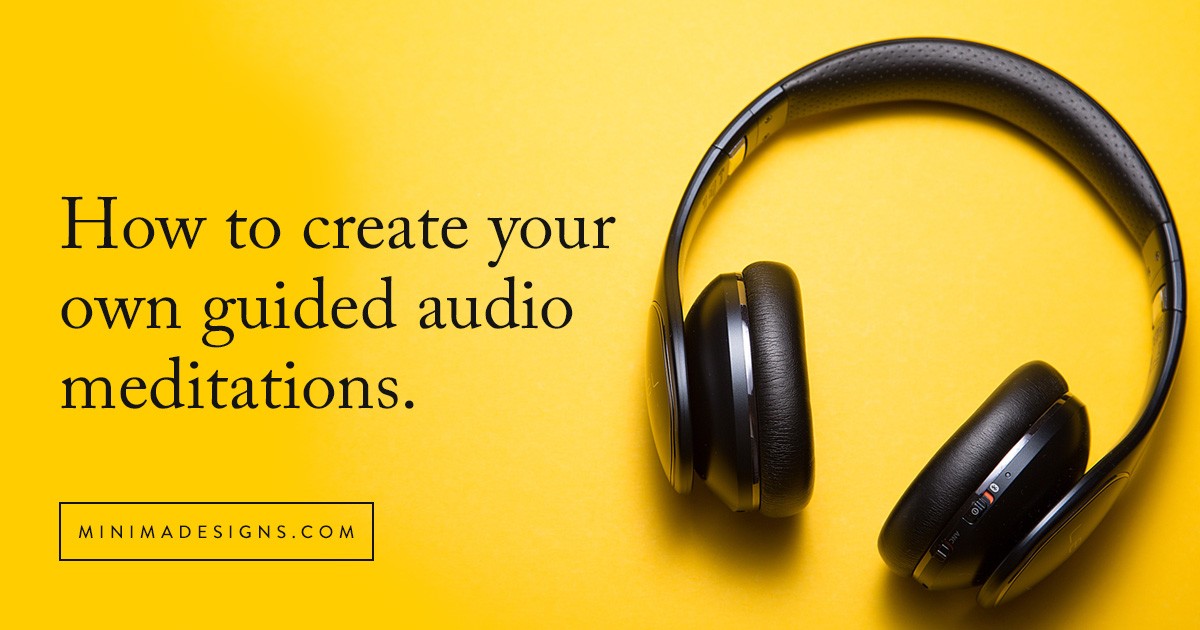Creating your own guided meditation can be a deeply rewarding experience, whether you’re looking to personalize your practice, share it with others, or even generate passive income. Forget generic meditation apps! This guide provides a comprehensive, step-by-step approach to crafting, recording, and sharing your unique guided meditations.
Getting Started: Equipment and Environment
You don’t need expensive equipment to begin. A smartphone and its included headphones are sufficient for initial exploration. However, upgrading your microphone significantly enhances audio quality.
Microphone Options
- Budget-Friendly: USB microphones are a great starting point. Recommendations include the Audio Technica ATR 2100 (which also features a headphone jack) or the Audio-Technica AT2005USB. The Blue Yeti and Samson Q2U Handheld Dynamic USB are also popular options.
- Mid-Range: For a more professional sound, consider the Rode NT1KIT Cardioid Condenser or the Zoom H6 (excellent for field recordings or interviews).
- Professional: High-end microphones like the Rode Procaster offer broadcast-quality sound but typically require an XLR interface and cables for computer connection.
Creating the Ideal Recording Space
- Quiet Environment: Choose a quiet room, minimizing background noise.
- Acoustic Treatment: Closets are excellent due to their sound-dampening properties. Small rooms with ample fabric are also suitable. Avoid large, boxy rooms that can create echo.
- Eliminate Distractions: Turn off phone ringers and enable airplane mode to prevent interruptions.
Crafting Your Guided Meditation Script
A well-written script is the foundation of an effective guided meditation. You can find guided meditation scripts for inspiration at websites such as Guidedmeditationscript.com.
Script Resources:
Tips for a Compelling Script:
- Prep and Practice: Familiarize yourself with the material to ensure a natural flow.
- Balance Script and Improvisation: Use an outline as a guide, allowing for spontaneous commentary.
- Pace and Pauses: Speak slowly and deliberately, allowing listeners time to process your words. Strategic pauses enhance impact.
- Record in Manageable Segments: Break longer meditations into shorter chunks for easier editing.
- Include Buffer Time: Add blank space at the beginning and end for seamless editing.
Recording Your Guided Meditation
Using Your iPhone:
- Plug in headphones.
- Open the Voice Memos app.
- Record your meditation.
- Review the recording and re-record if needed.
- Share the file via the “share” option.
Using Your Computer:
- Connect your microphone.
- Launch Audacity (or your preferred audio recording software).
- Adjust recording levels.
- Begin recording.
- Save the audio file.
Browser-Based Recording:
- Utilize online voice recorders like rev.com for quick recording and MP3 downloads. Bonus: you can get quick transcriptions.
Enhancing Your Audio with Editing
Editing can significantly improve the quality of your guided meditation.
Editing Software:
- Audacity: A free, powerful audio editor available for PC and Mac (https://www.audacityteam.org/).
- GarageBand: A user-friendly option for Mac users.
Essential Editing Techniques:
- Noise Reduction: Apply a noise filter to eliminate background sounds.
- Volume Normalization: Normalize volume to ensure consistent audio levels.
- EQ Modification: Experiment with the equalizer (EQ) to fine-tune your voice’s tone.
- Clean Up Audio Files: Remove unwanted noise and normalize audio to make your meditation sound professional.
- Best File Formats: Save your meditation as an .mp3 for compatibility across devices and browsers.
Finding Background Music:
Adding music enhances the meditation experience.
- Ensure you have the appropriate license to use and sell music commercially. For example, you can read more about finding music at Where to find background music for your guided audio meditations.
Sharing and Selling Your Guided Meditations
Free Sharing Options:
- Cloud Storage: Use services like Dropbox or Amazon S3 to store and share audio files.
- SoundCloud: Upload your meditation to SoundCloud for wider discoverability and embedding on your website.
Lead Magnet Freebie:
Offer your meditation as a free opt-in gift to build your email list.
- Save your meditation in a cloud service.
- Integrate the file into your newsletter service (e.g., ConvertKit) opt-in form or welcome email.
- Test the opt-in process to ensure easy access.
Monetization Strategies:
- Private Podcast: Create a private podcast feed for paying clients or members using platforms like Kajabi or Hello Audio.
- Gumroad: A simple platform for selling digital products, including guided meditations.
- Soundwise: Sell and securely deliver your audio products, including private podcasts and audiobooks (https://mysoundwise.com/?via=minima).
Selling on Gumroad:
- Create a Gumroad account.
- Upload your audio file and set a price.
- Add a compelling cover image.
- Write a product description.
- Publish your product.
- Share the link across your platforms.
Conclusion
Creating your own guided meditation is a fulfilling endeavor that allows you to connect with yourself and others on a deeper level. By following these steps, you can produce high-quality meditations that resonate with your audience and potentially generate income. Remember to prioritize clear audio, a well-crafted script, and a genuine connection to your message. Embrace the process, experiment with different techniques, and share your unique voice with the world.

